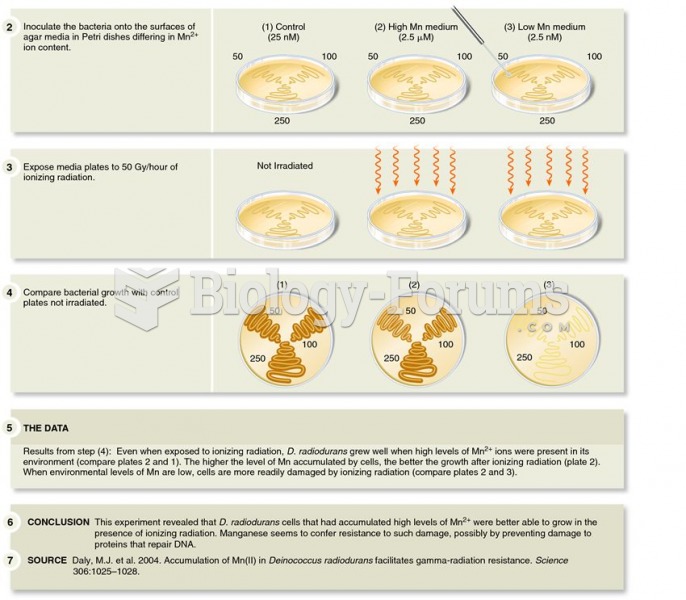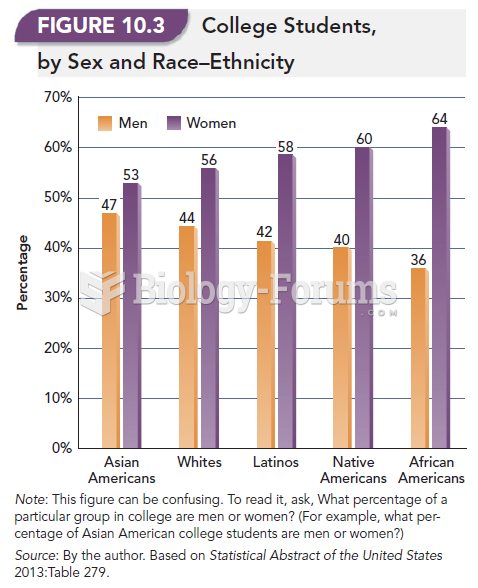|
|
|
It is important to read food labels and choose foods with low cholesterol and saturated trans fat. You should limit saturated fat to no higher than 6% of daily calories.
More than 150,000 Americans killed by cardiovascular disease are younger than the age of 65 years.
Bisphosphonates were first developed in the nineteenth century. They were first investigated for use in disorders of bone metabolism in the 1960s. They are now used clinically for the treatment of osteoporosis, Paget's disease, bone metastasis, multiple myeloma, and other conditions that feature bone fragility.
Cytomegalovirus affects nearly the same amount of newborns every year as Down syndrome.
There are over 65,000 known species of protozoa. About 10,000 species are parasitic.







